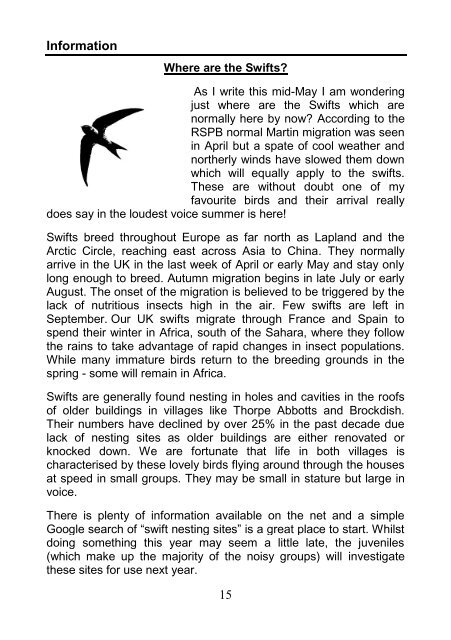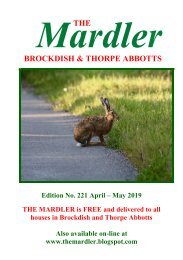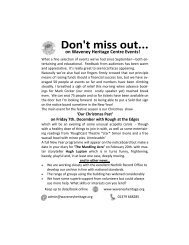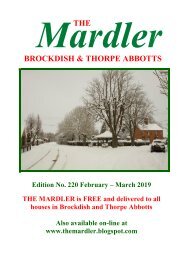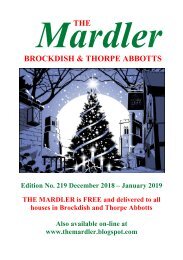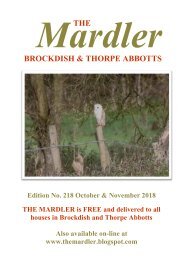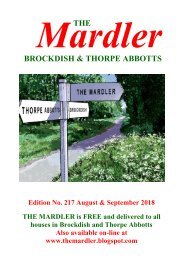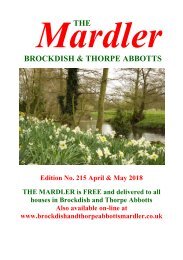You also want an ePaper? Increase the reach of your titles
YUMPU automatically turns print PDFs into web optimized ePapers that Google loves.
Information<br />
Where are the Swifts?<br />
As I write this mid-May I am wondering<br />
just where are the Swifts which are<br />
normally here by now? According to the<br />
RSPB normal Martin migration was seen<br />
in April but a spate of cool weather and<br />
northerly winds have slowed them down<br />
which will equally apply to the swifts.<br />
These are without doubt one of my<br />
favourite birds and their arrival really<br />
does say in the loudest voice summer is here!<br />
Swifts breed throughout Europe as far north as Lapland and the<br />
Arctic Circle, reaching east across Asia to China. They normally<br />
arrive in the UK in the last week of April or early May and stay only<br />
long enough to breed. Autumn migration begins in late July or early<br />
August. The onset of the migration is believed to be triggered by the<br />
lack of nutritious insects high in the air. Few swifts are left in<br />
September. Our UK swifts migrate through France and Spain to<br />
spend their winter in Africa, south of the Sahara, where they follow<br />
the rains to take advantage of rapid changes in insect populations.<br />
While many immature birds return to the breeding grounds in the<br />
spring - some will remain in Africa.<br />
Swifts are generally found nesting in holes and cavities in the roofs<br />
of older buildings in villages like Thorpe Abbotts and Brockdish.<br />
Their numbers have declined by over 25% in the past decade due<br />
lack of nesting sites as older buildings are either renovated or<br />
knocked down. We are fortunate that life in both villages is<br />
characterised by these lovely birds flying around through the houses<br />
at speed in small groups. They may be small in stature but large in<br />
voice.<br />
There is plenty of information available on the net and a simple<br />
Google search of “swift nesting sites” is a great place to start. Whilst<br />
doing something this year may seem a little late, the juveniles<br />
(which make up the majority of the noisy groups) will investigate<br />
these sites for use next year.<br />
15


